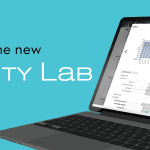Treadmill vs. Overground Ambulation: Implications for Clinical Biomechanists
APDM was involved in a recent study of clinical biomechanics that aimed to examine the influence of treadmill vs. overground ambulation.
“Complexity, fractal dynamics and determinism in treadmill ambulation: Implications for clinical biomechanists” was carried out by researchers from Mayo Clinic’s School of Health Sciences and Department of Physical Medicine & Rehabilitation.
The group outlines that emerging evidence shows that treadmill training for rehabilitative purposes may constrain the locomotor system, altering gait dynamics in a way that mimics pathological states. By examining the dynamic components of gait complexity, fractal dynamics and determinism during treadmill ambulation, the team gathered interesting findings. Namely, treadmill ambulation induces more predictable inter-stride time dynamics, and constrains the fluctuations in stride times and lengths. This may alter feedback from destabilizing perturbations that would normally be experienced in overground ambulation. Therefore, the team concluded that treadmill ambulation may provide less opportunity for experiencing the variation and adaptability necessary to successfully ambulate overground. This is an important finding because those interested in gait biomechanics should be aware that treadmill ambulation will alter dynamic gait characteristics, and a subject’s ability to translate locomotor skills from a treadmill to overground conditions may be impaired.
The team explains that gait must be both rhythmic enough for stability and to prevent falls, and also adaptable enough to account for destabilizing demands. Some inter-stride variability may indicate a healthy state of being, as found in Hausdorff et al., 1998, and Kaipust et al., 2012. Evidence shows that “reduced signal complexity in stride length and step width parameters distinguish people with neurological conditions from healthy controls.” In short, reduced gait complexity can indicate a pathological state.
For testing purposes, the team used 20 healthy participants aged 23.8 (+/- 1.2) years. The subjects walked at a preferred pace for six minutes on a treadmill and overground while wearing a full body gait and balance system from APDM – 6 Opal sensors (sternum, lumbar, wrists, feet). Metrics taken were stride time, stride length, and peak sagittal plane trunk velocity. The team used APDM’s Mobility Lab software to automatically interpret sensor data along with APDM’s iWalk plugin, among other analysis software from the University of Cincinnati and MatLab.
This study shows a great advantage of APDM’s Mobility Lab software. Mobility Lab’s automatic interpretation of data provides researchers and clinicians with immediate data feedback, without crunching numbers. All data is generated in a matter of seconds, compared to normative data as well as past trials from the same subject. This allows users to see changes in real-time, logging and tracking data objectively in less time than it would take otherwise. In addition, the study shows the adaptability and freedom that comes with using Opal sensors. The subjects were able to successfully ambulate in and out of laboratory settings, and on a treadmill or overground. The wireless nature and ability of Opals to log data on board the sensor gives the users much more flexibility than other comparable systems.





